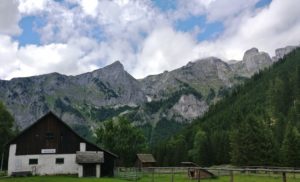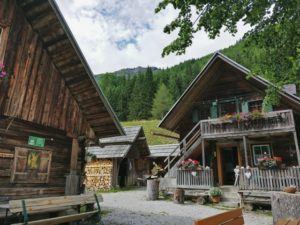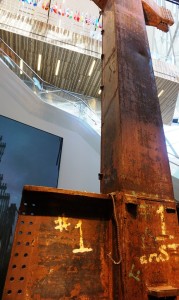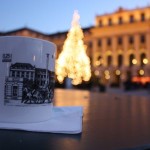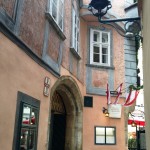An expat is not an expatriate. Whereas Giacomo Casanova was an expatriate who was exiled from Venice in the 1700s (need I say why) and had to wonder around Europe engaging in his shenanigans abroad, David Bowie was a UK expat who chose to live in New York. Yes, the terms share the French and Latin stems “ex” – “out of” and “patrie/patria” – “native land”, but an expatriate is someone who has been banished or exiled from their native country, and an expat is someone who voluntarily lives abroad – though the terms are increasingly being used interchangeably.
Since almost everyone in the world was born in the world’s best country, why would any sane person choose to reside abroad? In addition to the fact that living abroad makes you a much more conscientious resident of your own country and global citizen of the world, there might be a plethora of reasons why you choose to pack your bag and leave for Timbuktu (actually choose someplace safer in the world at the moment than Timbuktu). The most common reasons that I have encountered for folks to live somewhere else seem to be: 1) to study 2) to work 3) to follow a love interest 4) to seek (and find) adventure 5) to experience something completely different than one’s homeland (see 1-4 above) or 6) they simply got lost (intentionally or accidentally) and stayed.
With the advent of social media, being an expat has definitely become easier over the years. Not only can you connect with other expats over social platforms like Facebook and Twitter, you can also stay connected with your native homeland via Skype, Whatsapp or whatever else you may be using.
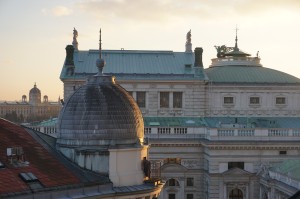
View of rooftops of Vienna and Burgtheater
Some folks move abroad and become native before they’ve even mastered the phrase Oachkatzlschwoaf. Others move and create the world-at-home abroad. They live in communities where most of their neighbors are expats as well, join social groups with the same people and never learn a single word of the native language. They shop in the grocery stores that have the products from home and tune in to all the US shows over iTunes and Netflix. Now more than ever, you can create your own little American haven in just about any corner of the world. I have even witnessed with my very own eyes — I kid you not, hand on heart, pinky promise — fellow Americans (yes, it’s true, my own countrymen and ladies) living in Europe who actually still drink (American!!) Budweiser. (Now the Czech Budweis would be a different story). If that isn’t a sure sign of bull-headed refusal to let your hair down and go even a little native, I don’t know what is. And that’s a pity because if that’s you, you are definitely missing out on more than very good beer so all-natural that hangovers are history.
So what is an upright global citizen to do? Go native in the beginning – maybe the first 6 months or so — and then gradually ease up and mix a dash of fellow expats into your native brew. The problem is that if you don’t go native at first, you may never integrate yourself into the host country and your experience abroad will be like Apfelstrudel without the Schlag, Starsky without Hutch, the yin without the yang. But if you manage a healthy mix of the two, the sky’s the limit and you are bound to form some of life’s most-lasting and strongest bonds. Because nothing says true friendship like a mutual lack of understanding for the humor of Narrisch Guat .
Top 10 things expats should do to get the ultimate experience:
1) Learn the native language – no and, ifs, buts about it. You must or you will never fit in – check out the “Austrian Phrase of the Week” and “Word of the Week” on this site too.
2) Dress like a local – though Dirndls are only worn in Vienna for special events, no one will hold it against you if you can’t resist donning one to the Heurigen or someplace else. Who can ever be angry at a dirndl-clad expat? The charm factor is too disarming.
3) Read local news media and watch local news– highly recommend “Der Standard” but if your German is not up to speed, indulge in the Krone or gratis subway paper Heute. You have a good excuse to look at a paper with more pictures than words and a page three image that would make Oma blush. And why yes, Austria does indeed now have more TV stations than ORF 1 and 2. Then again, if you are dutifully paying your ORF fees (as you should and must!), you definitely want to try to get your money’s worth and there’s more to that than Bergdoktor and Colombo re-runs. Maybe, though, opt for ORF 3 – that’s where the public money is seriously put to good use.
4) Listen to the local radio stations – Ö1 is kind of like NPR and has great reports at noon each day. Ö3 is what is popular while Superfly and FM4 are a bit more hip and chilled.
5) Read local authors – old and new — to get into the mentality of how your new neighbors tick, see the world, and maybe even you. For Austrian authors, try Arthur Schnitzler for older stuff and some soul searching, Torberg for some more good stuff from the 20th century (particularly Der Schüler Gerber, and Auch das war Wien, Wolf Haas for some light, modern but humorous crime stories that take place in Vienna, Peter Altenberg for some 1900 poetry, Karl Kraus for a critical, almost cynical view of pre-WW I Vienna, Adolf Loos for some well-written turn of the century (but still apt) essays criticizing society, Erich Fried for some terribly romantic and often tortured love poems, and and and… No excuses, get to Thalia and lose yourself in the Austrian literature section (at Wien Mitte they are even open on Sundays).
6) Listen to the local music (no matter how painful David Hasselhof’s love songs may be) – for a real treat turn on Radio Wien and you might become convinced you’ve entered a time machine back to the 60s and 70s.
7) Get to know the locals by joining some kind of group – running, reading, cooking, yodeling, there must be something you want to learn. Or get a dog if you live in Vienna – this is a 100% surefire way to engage locals in daily conversation.
8) Celebrate the local holidays. And in Austria there’s so many to choose from and don’t forget to invite the locals to yours. Nothing says Thanksgiving like a group of people from 5 different nations, sitting around the living room in a post-turkey daze, politely feigning excitement at the pumpkin pie coming their way.
9) Eat and cook the local cuisines (though you can always claim to be allergic to Blutwurst, Hirn mit Ei, Leberpastete, and Beuschel and no one would think any worse of you).
10) Have a positive outlook and be willing to laugh at yourself, your mishaps and any steps backwards you might definitely will take.
Once you integrate, connect with those back home via social media, online chats and phone conversations, instagram, youtube and – my favorite – podcasts.
And how do you meet up with those who are also far away from home? Check out organizations like this one:
 They were created over 10 years ago and have gone worldwide and currently boast more than 1.5 million members with 6000 in Austria. They regularly organize meet-ups and have lots of blog posts about anything you’d ever want to know about anything else.
They were created over 10 years ago and have gone worldwide and currently boast more than 1.5 million members with 6000 in Austria. They regularly organize meet-ups and have lots of blog posts about anything you’d ever want to know about anything else.
Another resource you might want to check out is a rather new site called Flying Yak (where you’ll find me as a voluntary “ambassador”): flyingyak.com
But no matter how you go about it — be sure to make lots of great memories!
 And if you are crazy enough to venture up in pounding, stinging rain, dragging your soaking wet body, step-for-step upwards like I did, you might just have a Frodo-like experience that would make the entire effort worthwhile. Cold, rain-beaten, and tired, you might just enter an abandoned-looking hut after the two hour hike that seemed oh so everlong to find an interior filled with the warmth of a wood-burning stove, the scents of homemade grilled Bratwurst, an abundance of drink and an over-bursting of song and merriment. Unbelievable. Not only was the hut busting at its seams with hikers out in that weather (some who climbed over in hail and snow), there was an accordion, an accordion player and a cabin full of beer-mug-swinging Austrians who knew all the lyrics to all the songs he played. Good times were had by all and I may have been mistaken, but I could have sworn there were some hobbits in the corner milking their Barlimann’s Best. Indeed, thank goodness this world has more to offer than work and perfect weather. Life is short, make the best of it!
And if you are crazy enough to venture up in pounding, stinging rain, dragging your soaking wet body, step-for-step upwards like I did, you might just have a Frodo-like experience that would make the entire effort worthwhile. Cold, rain-beaten, and tired, you might just enter an abandoned-looking hut after the two hour hike that seemed oh so everlong to find an interior filled with the warmth of a wood-burning stove, the scents of homemade grilled Bratwurst, an abundance of drink and an over-bursting of song and merriment. Unbelievable. Not only was the hut busting at its seams with hikers out in that weather (some who climbed over in hail and snow), there was an accordion, an accordion player and a cabin full of beer-mug-swinging Austrians who knew all the lyrics to all the songs he played. Good times were had by all and I may have been mistaken, but I could have sworn there were some hobbits in the corner milking their Barlimann’s Best. Indeed, thank goodness this world has more to offer than work and perfect weather. Life is short, make the best of it!
